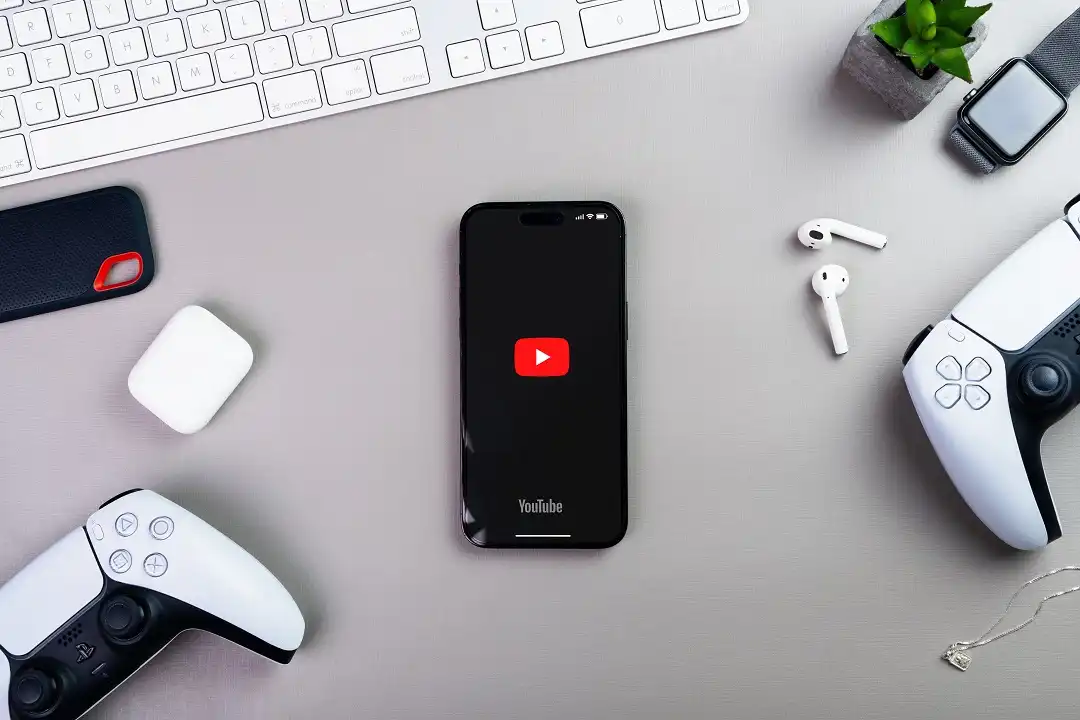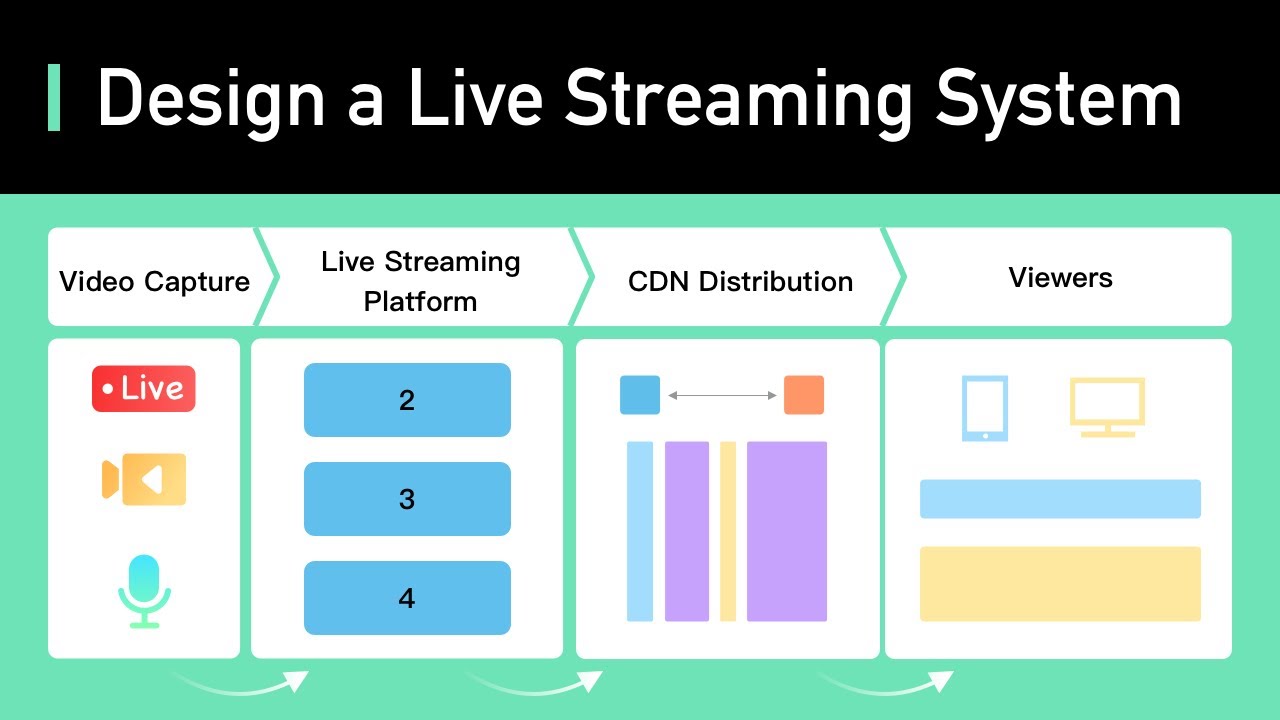With the rise of real-time content, YouTube Live Streaming has become a powerful tool for creators to engage with their audiences. Whether you're hosting a cooking show, gaming session, or a live Q&A, the immediacy of live streaming allows for authentic interaction that pre-recorded videos simply can't offer. But, before you dive in, it's essential to understand YouTube's requirements, as they can be a bit tricky. Let's break it down!
Common Misconceptions about YouTube Live Streaming

When it comes to YouTube live streaming, there are a lot of misconceptions that can lead to confusion. Here are some of the most common myths:
- You need 50 subscribers to go live: This is a huge misconception! Yes, some accounts were once limited to 50 subscribers, but YouTube has since updated its policies. Now, any creator can stream live from their mobile device after verifying their account, regardless of subscriber count. If you're streaming from a computer, you can go live even if you have no subscribers at all!
- Live streaming is only for gaming channels: While gaming channels have indeed popularized live streaming, there’s a whole world of content waiting to be explored! Creative tutorials, live podcasts, educational sessions, and more are all gaining traction. Any niche can benefit from real-time engagement with its audience.
- Live streams don't require planning: Just because live content is spontaneous doesn’t mean it shouldn't be planned. A successful live stream often involves preparation—whether it’s scripting key points, testing technical equipment, or promoting the event beforehand. Think of it as a mini-event where you want to put your best foot forward.
- You can’t edit a live stream: Once a live stream wraps up, it is preserved on your channel. You can edit the title, description, and thumbnail afterward. You might not be able to cut out live mistakes, but you can enhance the replay experience for viewers.
- Only big channels can attract viewers: While larger channels might have a broader reach, niche topics can perform surprisingly well in live streaming, especially if you engage with your audience authentically. Small creators can carve out their audience quite effectively!
Understanding these misconceptions helps you prepare better for your live streaming journey. It’s about knowing the tools at your disposal and how to leverage them effectively. So, are you ready to turn on your camera and engage with your viewers? The world of live streaming awaits!
Also Read This: Can YouTube Detect AI-Generated Content? What Creators Should Know
3. Current Requirements for Going Live on YouTube

If you're eager to start live streaming on YouTube, it's essential to understand the current requirements that the platform has in place. While it may seem simple to press that "Go Live" button, several criteria must be met to ensure a smooth streaming experience.
First and foremost, to live stream on YouTube, you need to have a verified account. Verification is straightforward and can be done in just a few minutes through the following steps:
- Sign in to your YouTube account.
- Visit the YouTube verification page.
- Follow the prompts to verify your account using a phone number.
After your account is verified, there's a 24-hour waiting period before you can start live streaming. This ensures that YouTube can review your content and streamline the live streaming process for users. Patience is key here!
In addition, you also need to ensure that you have enabled “live streaming” in your account settings. You can find this option in your YouTube Studio dashboard. Just navigate to the “Settings” section, click on “Channel,” and look for “Feature eligibility.” Here, you can enable live streaming.
Now, for those who are excited about going live via mobile, there’s a little more to consider. To live stream on mobile devices, you’ll need to have at least 1,000 subscribers. This requirement ensures that creators have a certain level of engagement and a following ready to tune in. If you're still growing your channel, don’t worry! You can still go live from your computer without the subscriber threshold.
Finally, remember that your live streams must comply with YouTube’s community guidelines. Content that violates these guidelines might lead to restrictions or bans on your live streaming privileges. So, while you're ready to jump into the excitement of live streaming, always make sure you adhere to these rules!
Also Read This: How to Full-Screen YouTube Videos on Your Laptop for an Immersive Experience
4. The Role of Subscribers in Live Streaming
Now, let’s dive into the 50 subscriber myth and clarify the actual role of subscribers in live streaming. Many new YouTubers believe that they need a specific number of subscribers to start broadcasting live. However, this isn't entirely accurate.
YouTube has set different thresholds for live streaming, depending on the device you're using. As mentioned earlier, if you want to live stream on mobile, you do indeed need at least 1,000 subscribers. This might sound daunting, especially if you’re just starting out, but remember, many YouTubers didn’t have that many subscribers when they began! It just takes time and consistency to build an audience.
On the flip side, when it comes to live streaming on a desktop or laptop, you can go live without any subscriber limit. This opens up a fantastic avenue for smaller creators to connect with their audiences without feeling the pressure of hitting that minimum subscriber count immediately.
- Mobile Live Streaming: Requires 1,000 subscribers.
- Desktop Live Streaming: No subscriber threshold!
Some might argue that the subscriber count can impact your live stream in terms of viewership. A higher subscriber count usually means a better chance of attracting a larger audience for your live sessions. Webinars, Q&A sessions, or just casual chats can engage your existing audience and even bring in new viewers.
Ultimately, while subscribers play a critical role in your YouTube journey, don’t forget that genuine content creation and audience engagement are what truly matter. Focus on building relationships with your viewers, providing value, and growing your channel naturally. The subscribers will follow!
So, whether you're just starting or have a budding channel, the key is to stay committed and authentic to your vision. Happy streaming!
Also Read This: Watching YouTube Videos in the Background on Android: A How-To Guide
5. Step-by-Step Guide to Going Live on YouTube
Ready to dive into the world of live streaming on YouTube? It can seem a bit daunting at first, but I promise you, it's a straightforward process once you break it down. Here’s a simple step-by-step guide to help you go live with ease:
- Check Your Eligibility: First things first! Make sure your channel is eligible for live streaming. You need to have a verified account and no live streaming restrictions in the last 90 days. A quick visit to your YouTube Studio can clarify this.
- Enable Live Streaming: If your account is verified, go to the YouTube Studio, click on 'Create' (the camera icon), and select 'Go Live'. Follow the prompts to enable live streaming on your account if you haven’t already done so.
- Choose Your Streaming Method: Decide how you want to stream. You can go live directly from your webcam, using streaming software like OBS (Open Broadcaster Software), or even through mobile streaming if you're on the go. Each option has its own set of requirements and advantages.
- Set Up Your Streaming Software (if applicable): For those opting for streaming software, set it up according to the guidelines provided on the YouTube Help page. This generally involves entering your stream key and ensuring your audio and video sources are correctly set up.
- Create Your Live Stream: In YouTube Studio, select 'Schedule Stream' if you want to set a specific time. Fill in the details like title, description, and thumbnail. Be sure to check your privacy settings—public, unlisted, or private.
- Promote Your Stream: Share your live stream link on your social media channels and with your subscribers. Building anticipation can significantly boost your viewer count. Let them know what you'll be discussing or doing during the stream!
- Start Streaming: When it's time, head back to your YouTube Studio, click on 'Go Live' and start your stream. Remember to engage with your audience—acknowledge comments, answer questions, and make it interactive!
- End the Stream and Review: Once you finish, simply end the stream. YouTube will automatically save it, allowing viewers to watch the replay. Review your analytics afterward to understand what worked well and what can be improved next time!
And there you go! With this guide, you're all set to hit that “Go Live” button and start broadcasting to your audience. Enjoy the experience
Also Read This: How to Stop YouTube Ads on Android Devices: Easy Methods
6. Additional Tips for Successful Live Streaming on YouTube
Now that you know how to go live, let's talk about some additional tips to ensure your live streaming sessions are not just successful but also enjoyable for you and your audience.
- Test Your Setup: Before going live, conduct a test run. Check your audio, video quality, and internet connection. A shaky connection can lead to poor streaming quality, which might frustrate viewers.
- Engage with Your Audience: One of the best parts of live streaming is the ability to interact with your viewers in real-time. Encourage them to ask questions, participate in polls, or share their thoughts in the chat. The more engaged they feel, the more likely they are to return.
- Have a Backup Plan: Tech issues can happen. Always have a backup plan in case something goes wrong, be it internet issues or software glitches. Maybe have a second device ready to communicate with your audience if you face any interruptions.
- Stay Consistent: Like any other content, consistency in your streaming schedule can help build a loyal audience. Pick a day and time that works for you and stick to it, building anticipation for each stream.
- Analyze and Adapt: After each live stream, take some time to review the analytics YouTube provides. Pay attention to peak viewership times, engagement stats, and viewer feedback. This can guide you in enhancing future streams.
- Keep it Fun: Don’t forget to enjoy the experience! People are drawn to authenticity and enthusiasm. If you’re excited about what you’re doing, your audience will be too.
With these additional tips under your belt, you’re well on your way to creating engaging and professional live streams that could captivate your audience. Happy streaming!
Conclusion: The Importance of Meeting YouTube's Requirements
In an ever-evolving digital landscape, understanding and adhering to YouTube's requirements for live streaming is essential for content creators who wish to capitalize on this dynamic platform. Many users fall into the trap of believing in the 50 subscriber myth, which states that a minimum of 50 subscribers is necessary to access live streaming capabilities. However, this is a simplification of YouTube's actual guidelines.
To effectively utilize live streaming, creators should be aware of the following key requirements:
- Channel Verification: Your channel must be verified to use live streaming features.
- Strikes and Community Guidelines: Ensure your channel is free of strikes, as any violations can restrict access to live features.
- Eligibility: All channels must meet specific eligibility criteria, which can vary based on location and content type.
- Device Requirements: Live streaming options may depend on whether you are using a mobile device or desktop.
Moreover, complying with these requirements not only unlocks the potential of live streaming but also enhances your credibility as a content creator. Meeting YouTube's standards can lead to greater audience engagement, increased visibility, and ultimately a more successful channel. Keeping an eye on updates to YouTube's policies will ensure that you're always prepared to take full advantage of the platform’s offerings.
In conclusion, understanding and meeting YouTube's live streaming requirements is crucial for any content creator aiming to maximize their reach and impact on the platform.
 admin
admin








